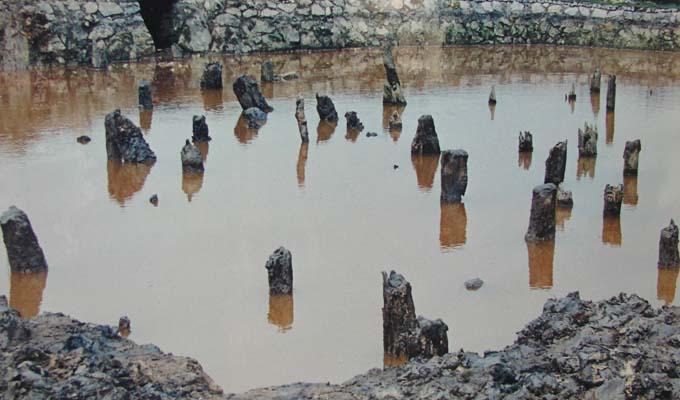The Prime Minister approved a project worth 80 billion VND (3.57 million USD) on preserving the historical relic site where the famous Bach Dang victory took place 1288 in Uong Bi, Quang Ninh northern province.

The project, to be implemented from now to 2020 by the provincial People’s Committee, aims at comprehensive upgrades to the site’s facilities in line with the Master Plan on preserving and promoting the Bach Dang Victory historical site, which was approved in 2013.
The components include building the roads to the complex, a hall and an underground room showcasing the original artifacts related to the Bach Dang Victory in 1288, and other supporting facilities.
Other objectives include promoting the site’s historical and traditional values, and developing tours connected with the historical site, thus contributing to local socio-economic development.
The battle on the Bach Dang River under the leadership of General Tran Hung Dao took place at Dong Ma Ngua stake yard in Quang Yen town, which received the national historical site status on April 15.
The Bach Dang river runs through Yen Hung district (QuangNinh) and Thuy Nguyen (Hai Phong) before reaching the sea.
Borrowing the same tactic that Ngo Quyen used against the Chinese in 938, General Tran Hung Dao studied the tidal law, had stakes planted under the water and arranged ambushes in a unified plan of campaign.
The general sent small flotilla to harass the Mongol fleet and then pretended to retreat. The Mongols eagerly pursued Dai Viet troops and fell into their pre-arranged battlefield.
Then thousands of Dai Viet’s small boats from both river banks all together quickly appeared, launched fierce attacks and broke the combat tactics of the enemy. The Mongols tried to withdraw to the sea in panic. Hitting the stakes, their boats were halted, many of which were broken and sunken.
Unlike the two previously discovered yards, stakes in Dong Ma Ngua were driven into the riverbed densely like a wall.
The stake yard was discovered in 2005 and scientists affirmed it was one of the stake traps placed hidden in the Bach Dang river, contributing greatly to the nation’s victory over Mongol invaders in the year.